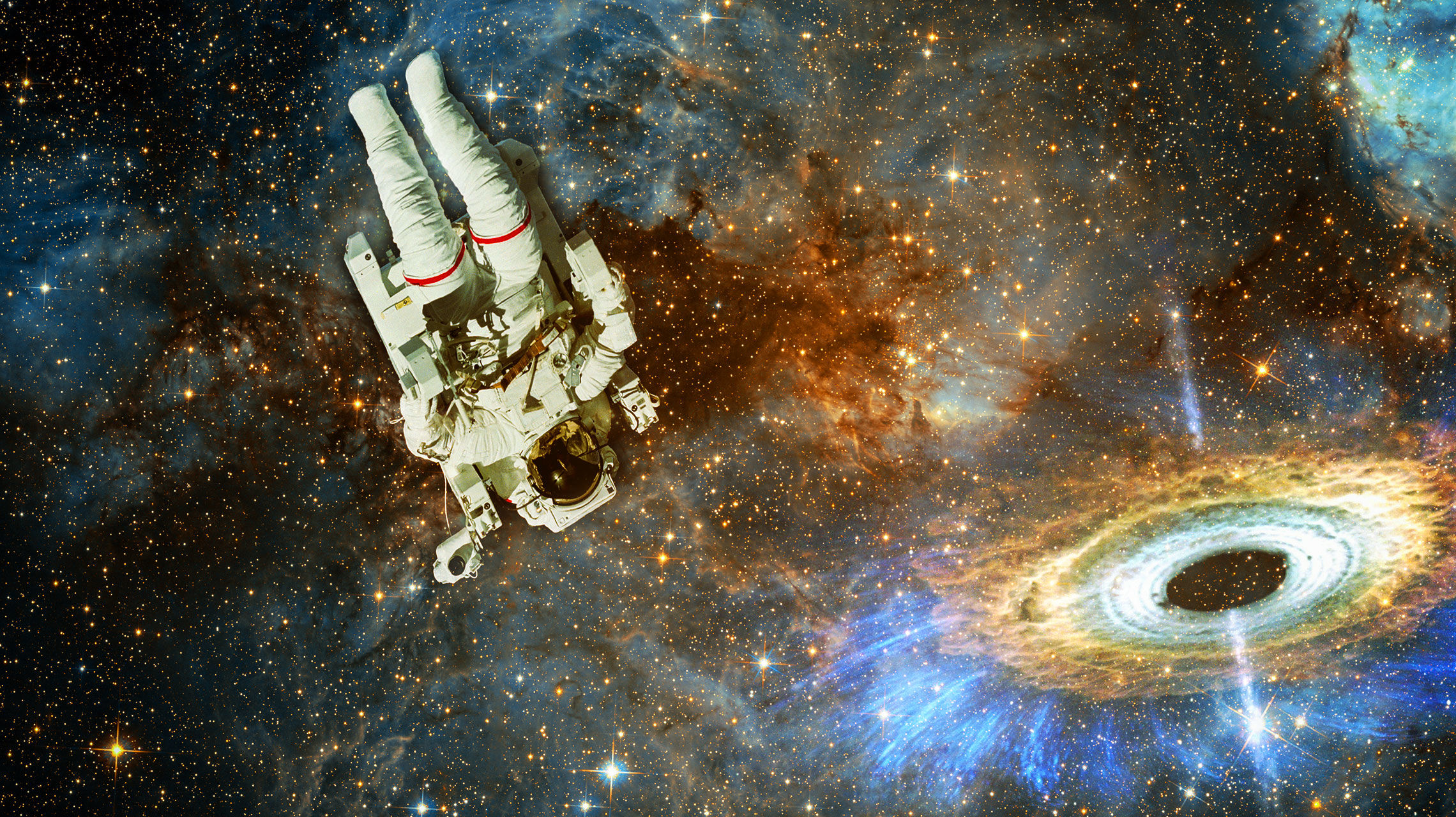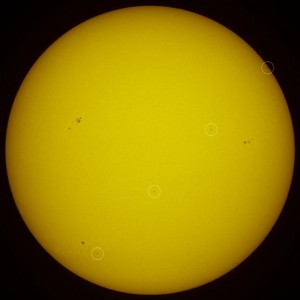Create a free profile to get unlimited access to exclusive videos, sweepstakes, and more!
Why is the Sun so round?

[NOTE: When I originally wrote this, I made a mistake - I said the Sun was 30 arcseconds across, when it's actually 30 arcminutes. For some reason, that number got stuck in my brain, and the math I did was based on the incorrect number! I have corrected the math in the text below. Usually I keep the original mistake in an article (striking through the text) along with the correction - that's my way of admitting mistakes. But given that this is math, I was afraid that might look a bit confusing, so instead I'll note my brain hiccup here, and keep the math clean by simply fixing it. However, this does change the analogy I used in the text comparing the Sun to a basketball, so in that case I struck through the text and added the correct analogy. I know, it sounds confusing, but it'll be clear when you read the article. My apologies for this!]
 A new study has been published that seems very simple yet has some very interesting repercussions: it shows the Sun is the most spherical natural object ever measured.
A new study has been published that seems very simple yet has some very interesting repercussions: it shows the Sun is the most spherical natural object ever measured.
Measuring the Sun's diameter is actually rather difficult. For one thing, observations from the ground have to deal with our atmosphere which warbles and waves above us, distorting images of astronomical objects. To get past that, the researchers used a camera on NASA's Solar Dynamics Observatory, which orbits high above the Earth. The camera is very stable, and gets past a lot of the problems of measurement uncertainty.
Another problem is that the Sun doesn't have a solid surface. It's not like a planet - and even that can be tough to measure. Since the Sun is gaseous, it just kind of fades away with height, so if you try to get too precise you find a lot of wiggle room in the size. In fact, the largest variation the researchers found in the solar diameter was due to intrinsic roughness of the Sun's limb - in other words, on very small scales the Sun isn't smooth.
Still, there are ways around that. The point here isn't necessarily to find the actual size, but the ratio of the diameter of the Sun through the poles (up and down, if you like) to the diameter through the equator. That tells you how spherical the Sun is.
What I would expect is that the Sun is slightly larger through the equator than through the poles, because it spins. That creates a centrifugal force, which is 0 at the poles and maximized at the equator. Most planets are slightly squished due to this, with Saturn - the least dense
and fastest spinning planet, with a day just over 10 hours long - having a pole to equator ratio of about 90%. It's noticeably flattened, even looking through a relatively small telescope.The Sun spins much more slowly, about once a month. That means the centrifugal force at its equator isn't much, but it should be enough to measure. So the scientists went and measured it.
And what they found is that the polar and equatorial diameters are almost exactly the same. In fact, they found that the equatorial diameter is 5 milliarcseconds wider than the polar diameter. An arcsecond is a measure of the size of an object on the sky (1° = 60 arcminutes = 3600 arcseconds), and the Sun is about 30 arcminutes (1800 arcseconds) across. In other words the equatorial diameter is only 0.0003% wider than the polar diameter!
The Sun is a 99.9997% perfect sphere. Hmmm.
Put another way, if you shrank the Sun to the size of a basketball, the equatorial diameter would be wider than the polar one by about 0.4 microns -
the width of a human hair less than the size of an average bacterium! That's actually pretty cool.What this almost certainly means is that the assumptions people make about the Sun aren't quite on the ball*. One assumption is that the Sun is a big ball of gas, and the only forces on it are gravity, pressure, and centrifugal force. The physics of those aren't too hard to work out, but up until now predict a slightly squashed Sun. So something else must be going on.
One obvious thing is the Sun's ridiculously complicated magnetic field. The gas inside the Sun is hot, and the atoms making it up have their electrons stripped off. That makes them ions (and the gas is then called a plasma), which are affected by magnetic fields. It's possible that the strength of the magnetism inside the Sun acts like a sort of tension, stiffening the Sun, so it doesn't bulge out at the equator as much as expected (or at all).
Also, since the Sun isn't solid, it doesn't spin as one. Parts of it rotate faster than other parts; it spins once every 25 days at the equator, but every 35 days at the poles. It's possible that this isn't constant with depth (plasma under the surface may spin at different rates than stuff at the surface) and that could affect this as well.
Most interestingly to me is that the scientists determined the Sun's size doesn't change with time, including the 11 year solar cycle. The Sun's overall magnetic field fluctuates with time, weakening and strengthening on an 11 year cycle (which is why we're seeing more sunspots now; we're approaching solar max). If the Sun's shape were being restricted by interior magnetic fields, you might expect the size to change slightly with the cycle as well. The scientists who did this study have ruled that out.
So what's going on? Hard to say. We do actually have a very good understanding of the solar interior due to advances in physics over the past century or so - models have been tested very carefully and what we have now works extremely well... up to a point. What will happen next is that different models will be tested to see which ones can match observations, then more predictions will be made, and then more and better observations will be done to test those predictions. Some models will survive this trial, and our understanding will have grown.
This issue of the Sun's sphericity strikes me as a fluctuation on what we know. It doesn't mean everything we thought we knew is wrong, just that there's more to know about the Sun.
And that, of course, is why science is so much fun! It never ends, and there's always something new and interesting to discover.
Image credit: Thierry Legault
* HAHAHAHAHAHA! Get it?
Related Posts:
- The Sun is 1,392,684 +/- 65 km across
- When I say centrifugal I mean centrifugal!
- The Earth's lumpy gravity
- A very smart kid and a very solid theory


























